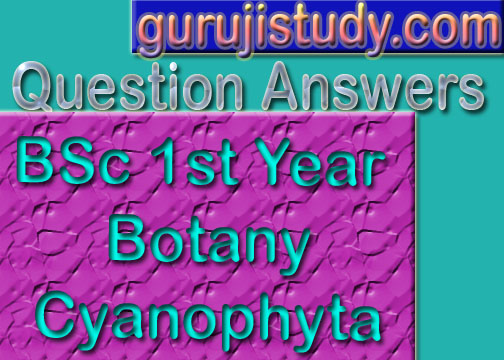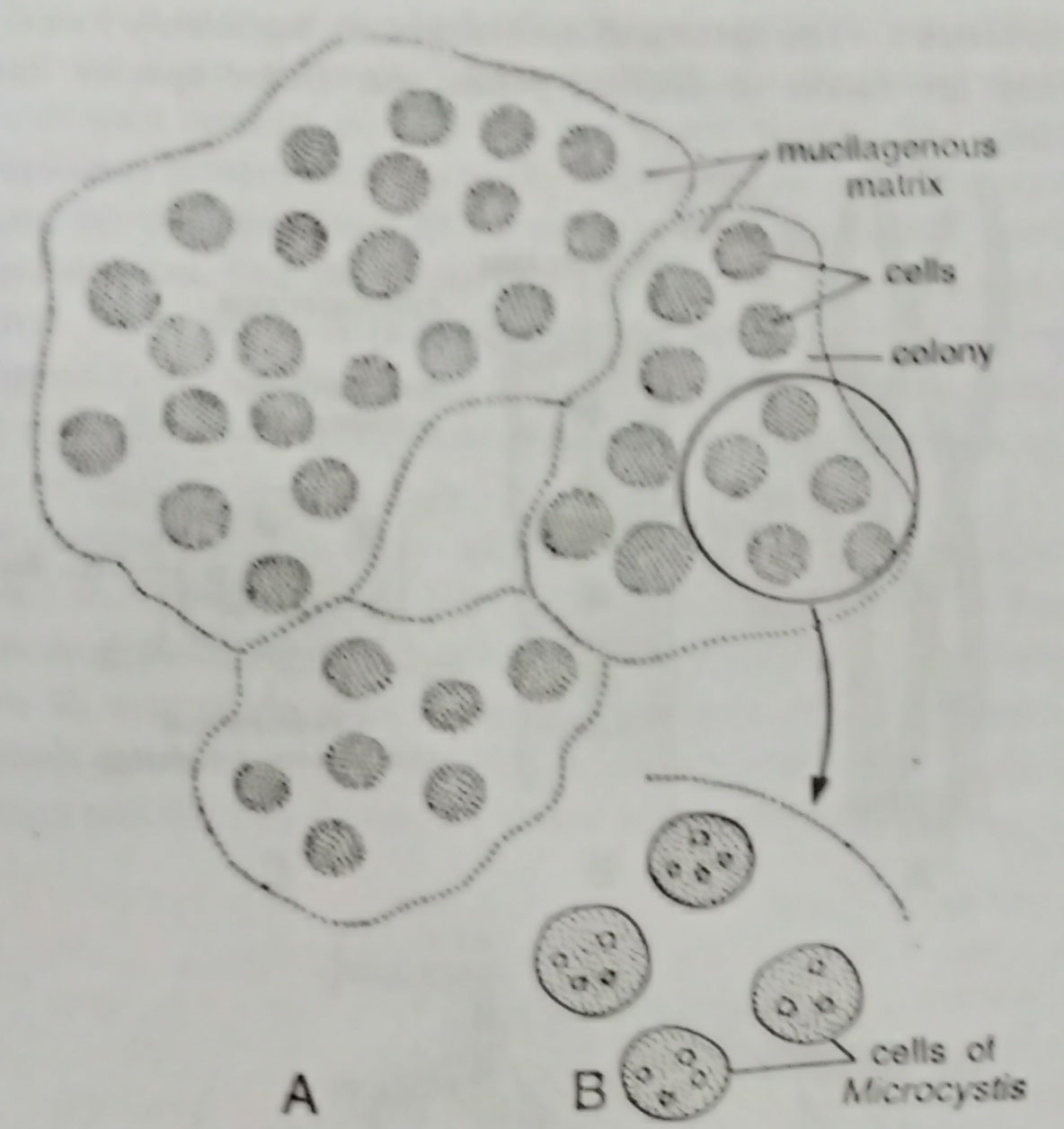BSc 1st Year Botany Cyanophyta Sample Model Practice Question Answer Papers
BSc 1st Year Botany Cyanophyta Sample Model Practice Question Answer Papers: BSc is a three-year program in most universities. Some of the universities also offer BSc Honours. After getting enrolled for BSc, there are certain things you require the most to get better grades/marks in BSc. Out of those, there are BSc Study Material, BSc Sample Model Practice Mock Question Answer Papers along with BSc Previous Year Papers. At gurujistudy.com you can easily get all these study materials and notes for free. Here in this post, we are happy to provide you with BSc 1st Year Botany Cyanophyta Sample Model Practice Question Answer Papers.

- BSc 1st Year Botany Cyanophyta Sample Model Practice Question Answer Papers
Index for BSc Botany Cyanophyta
Account of Microcystis: Page 1
Structure and methods of reproduction in Oscillatoria: Page 2
Q.1. Give an account of Microcystis.
Ans.1. Microcystis (Gr. micro =small, cystis = bladder) is a fresh water colonial alga. Most species are euplanktonic and are aided by pseudovacuoles. In tropical countries, species of Microcystis multiply so prolifically that they impart a bluish-green colour to the pond water which appears like “pea soup. Some species of Microcystis, like M. aeruginosa, cause water blooms in lakes.
The prolific growth of some species of Microcystis (e.g., M. aeruginosa) in a water body often results in severe depletion of oxygen. This leads to mass mortality of fish and other aquatic animals due to suffocation. Certain species of Microcystis (e.g., M. aeruginosa) produce a toxin, called microcystin, which is highly toxic to fish and aquatic birds.
The toxin is also fatal to domesticated animals that drink contaminated water. M. toxica is highly poisonous and is responsible for the death of thousands of sheep and cattles. (BSc 1st Year Botany Cyanophyta Sample Model Practice Question Answer Papers)
In humans, some species of Microcystis cause gastric trouble, if they are ingested along with drinking water or during swimming. There are several species of Microcystis that inhibit the growth of bacteria (such as Staphylococcus, Clostridium), zooplanktons and several other algae.
Thallus Structure
The colonies of Microcystis may be round and definite in shape or irregular or sometimes clathrate, depending upon the species. There are hundreds or thousands of small, marble-like cells in each colony. The spherical or elongated cells in a colony float freely in a colourless, homogeneous mucilaginous matrix. They lack individual sheath, and exhibit typical cyanophycean cell structure. Numerous pseudovacuoles are frequently present in a cell.

Reproduction
Microcystis reproduces only vegetatively and sexual reproduction is completely absent. The vegetative propagation takes place either by fission or by fragmentation of the colony. The fission is simple cell division which takes place in all planes.
In M. flos-aquae, nannocytes, the modified endospores are formed by repeated divisions of cell contents.
BSc 1st Year Botany Cyanophyta Sample Model Practice Question Answer Papers